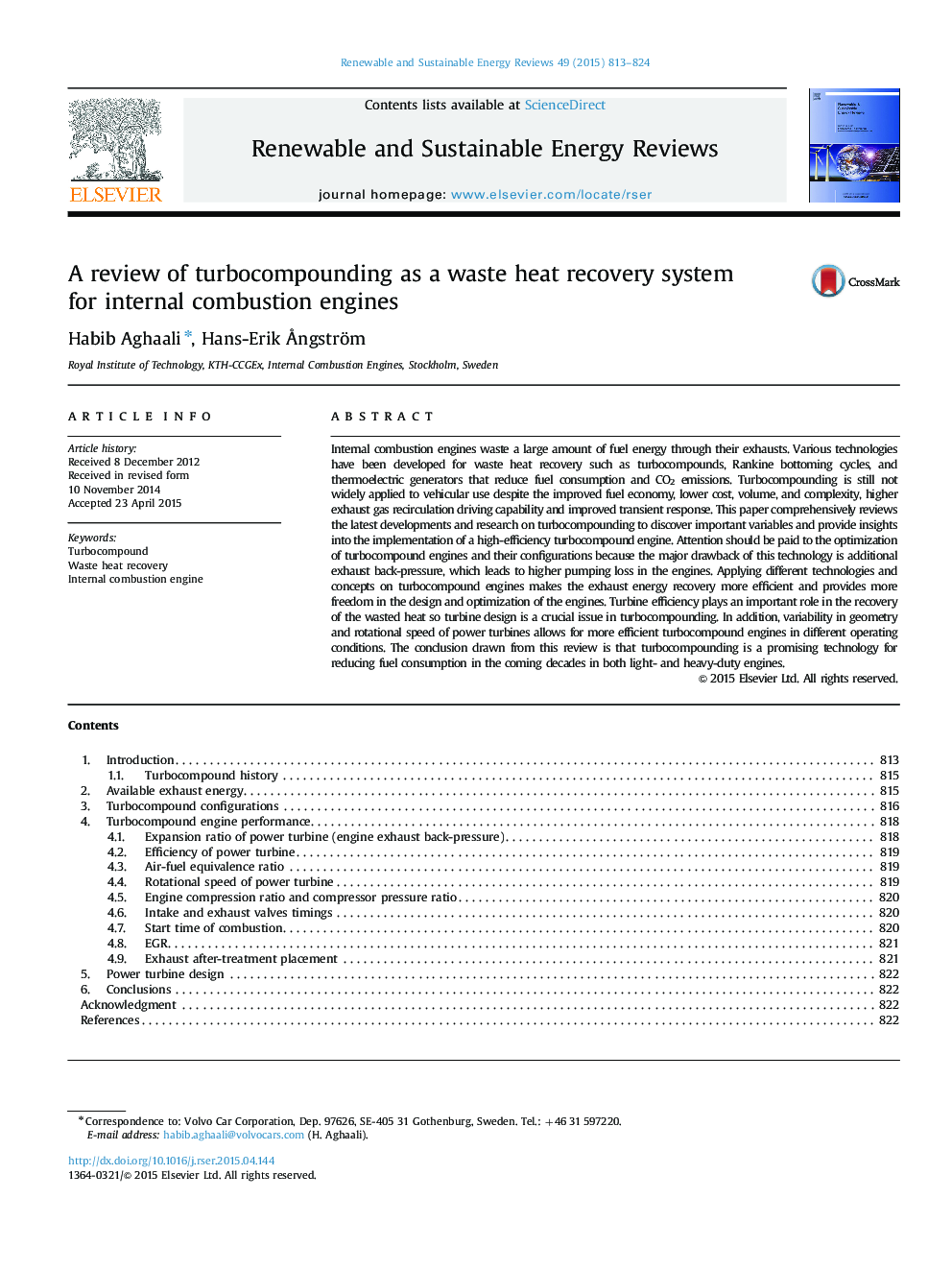| Article ID | Journal | Published Year | Pages | File Type |
|---|---|---|---|---|
| 8116839 | Renewable and Sustainable Energy Reviews | 2015 | 12 Pages |
Abstract
Internal combustion engines waste a large amount of fuel energy through their exhausts. Various technologies have been developed for waste heat recovery such as turbocompounds, Rankine bottoming cycles, and thermoelectric generators that reduce fuel consumption and CO2 emissions. Turbocompounding is still not widely applied to vehicular use despite the improved fuel economy, lower cost, volume, and complexity, higher exhaust gas recirculation driving capability and improved transient response. This paper comprehensively reviews the latest developments and research on turbocompounding to discover important variables and provide insights into the implementation of a high-efficiency turbocompound engine. Attention should be paid to the optimization of turbocompound engines and their configurations because the major drawback of this technology is additional exhaust back-pressure, which leads to higher pumping loss in the engines. Applying different technologies and concepts on turbocompound engines makes the exhaust energy recovery more efficient and provides more freedom in the design and optimization of the engines. Turbine efficiency plays an important role in the recovery of the wasted heat so turbine design is a crucial issue in turbocompounding. In addition, variability in geometry and rotational speed of power turbines allows for more efficient turbocompound engines in different operating conditions. The conclusion drawn from this review is that turbocompounding is a promising technology for reducing fuel consumption in the coming decades in both light- and heavy-duty engines.
Related Topics
Physical Sciences and Engineering
Energy
Renewable Energy, Sustainability and the Environment
Authors
Habib Aghaali, Hans-Erik Ã
ngström,
